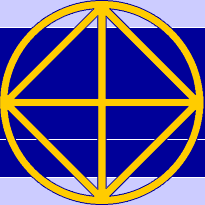Book Presentation
"Ayurveda"
by Dr. Ekkirala Krishnamacharya

Ayurveda is the science of Life. The vital body, senses and the mind form the field of study of health and disease in Ayurveda. It is the habit-forming nature of man that is to be used positively as a preventive method for all diseases. Master E.K. has written a fine introduction to this vast subject and his intention is to reach a wide public audience, so that the language remains relatively non-technical.
Content: Preface; The Scope of the Subject; Ayurveda; The Constitution of Man; Health and Disease; The Cause of Disease; Some Fundamental Postulates; The Three Basic Tissues; The Seven Tissues; Classification of Medicines; Dietetics; A Routine to Keep up; The Goal o Ayurveda; Physical Exercise; Good Behaviour; A Scientific Investigation into the Causes of Disease and Health; Desirable Desires.
Kulapathi Book Trust, Visakhapatnam, India, 1983
- Book order information
- About the Author
- We have a few English copies to distribute for free.
Sample:
AyurvedaAyurveda is the science of span and how to maintain it healthily. It is mainly the science of health and not the science of disease and its cure. Science of disease is negative in its very nature and we have seen the defects of getting trained in the negative way. There is a progressive deterioration of human health parallel to the progressive development of the science of disease. This is the experience of the twentieth century. Now it is time to look to a positive dimension like the science of health after knowing which we have the right to know about the disease and its cure. This is the logic you find when you follow the study of Ayurveda.
The origin of Ayurveda is described in the ancient texts. Of course, it is described in an esoteric way as it is usual with all the other text-books of true sciences. One sage named Bharadwaja lived about 6000 years ago. He wanted to know the secret of longevity. He sat in meditation and found himself in the presence of the king of a group of Devas of the mineral and the plant kingdoms. He named the king of the Devas as Indra who received his Light from the Four-faced Creator. From Indra the science of span descended to the mind of a Deva called the year-God, Daksha. From him, the wisdom descended to the mind of the twin Devas (Aswins) who presided over the two halves of time cycles. Having experienced this scene during his meditation, Bharadwaja received the wisdom of Ayurveda. Bharadwaja imparted the wisdom to many sages.
Kings became adepts and patronised the science. They prepared two groups of disciples who served the public. One group was trained to initiate the seekers among the public and make them adepts. The second group went round with all equipment to heal the people in city, country and town. The first group was called the band of Susrutaas and the second group, Charakaas. In course of time they made their own teaching notes with minute chapter divisions. The standardised versions of these teaching notes are called Susruta samhita and Charaka Samhita. The word Samhita means a collection. So we have the first two earliest collections of the written version of the science of Ayurveda. Subsequently, there are hundreds of books about Ayurveda in Sanskrit. They are also more or less traditional and authoritative and scientific in their nature and composition.
Any scientific treatise on health and healing is bound to throw light upon the finer forces and the subtler vehicles that make up the human constitution. The cause of our living is not physical. In fact the physical body is one of the ultimates of our living. It is only the shape of the thousands of lights that are shining in the name of energies and intelligences. Man is the indweller and not the body. Between man and the physical body there are thousands of subtler vehicles which can be called the Ashrams of many intelligences and their forces. Any branch of healing science is bound to speak of these subtler vehicles and their functions (some of them, though not all). Since every scientific horizon on the subject of healing includes the knowledge of disease and medicine, the student is expected to have a good understanding of these intelligences, energies and vehicles with a good system of division and grouping.
In the modern age we have this grouping re-discovered by Dr. Samuel Hahnemann in his homoeopathic treatise. From the translations of the Upanishads and the Yogic literature in Sanskrit, we have a fairly clear idea of these vehicles. Through the works of H. P. Blavatsky and Alice A. Bailey there is a high degree of illumination among the occidentals about these vehicles. I can venture to put forth that the sincere occidental student is more familiar with these subtler vehicles, intelligences and energies than the average Indian today.
The vital body, senses and the mind form the field of study of health and disease in Ayurveda. The theory of the vital force and the vital body in Ayurveda is identical with the same in homoeopathy. No sane mind is made to believe that the physical body is an entity. It is the resultant of many subtler happenings and has no existence of its own. Appearance to the senses is often misunderstood as existence.
THE CONSTITUTION OF MAN
The constitution of man is understood as two-fold, three-fold, four-fold, five-fold and seven-fold. The co-existence of the spirit and his nature is two-fold (Purusha and Prakriti). The triple principle of matter, force and consciousness is called existence. This is the three-fold division. The indweller (Love), his creative intelligences, the energies and the atoms of the matter form the fourfold principle. Matter, vital force, mind, intelligence and the will to live, put together, form the five-fold principle. The five items are termed as Annamaya, Pranamaya, Manomaya, Vijnanamaya and Anandamaya. The seven-fold division of the ancient scriptures is necessary for those real healers who work for the humanity.
For the present, let us take up the vital body and its functions as described in Ayurveda. The vital body of the healer is the same as the etheric and the astral bodies of the spiritual student. It is called Pranamaya Kosa. The equilibrium between matter and vital force is the cause of the span of life. It makes the individual mind manifest. Then the mind begins to throw light which we call understanding, discrimination and right action. At this stage the light is called Buddhi, the fourth plane of existence. This is the light which is throw upon the physical, vital and the mental bodies to know what is there, how it functions and what we are to do with it. The total wisdom is what we call the science of Yoga. In the more ancient days it was called the science of the Veda, a part of which was Ayurveda.
Three functional centres are described in the vital body. They are creative, combustive and pulsative. They are respectively called Sleshma, Pitta and Vaata in Sanskrit. Sleshma is also called Kapha. These three work as three functional whirlpools. The first one is the cause of intake. The second one is the cause of pushingout. The third one is the cause of poise between the two opposing forces. The first force makes the constitution admit food, drink, air, light, sound and thought to be utilised for tissue building substances, potentialities and seeds. The second force utilises the products as the fuel for engine. It then produces combustion to make the energy centres manifest the energies of space. In this process it decomposes the tissue and pushes out the elementary substances of the mineral and plant kingdoms as the excretes. The first centre works out the building of the seven tissues in the constitution. The seven tissues are:
1. Rasa (Plasma)
2. Rakta (Blood)
3. Mamsa (Flesh)
4. Medas (Cortical tissue)
5. Asthi (Bony tissue)
6. Majja (Marrow)
7. Sukra (Reproductive tissue).
The second centre works out the tissue destruction for utilisation. The third centre keeps the pulsations of the centripetal and centrifugal activities in poise. The first centre is the creator, the second centre is the destoryer and the third centre is the cause of the preservation of equilibrium and this is the real cause of the span of life.

 Circle of Good Will
Circle of Good Will Contact
Contact
